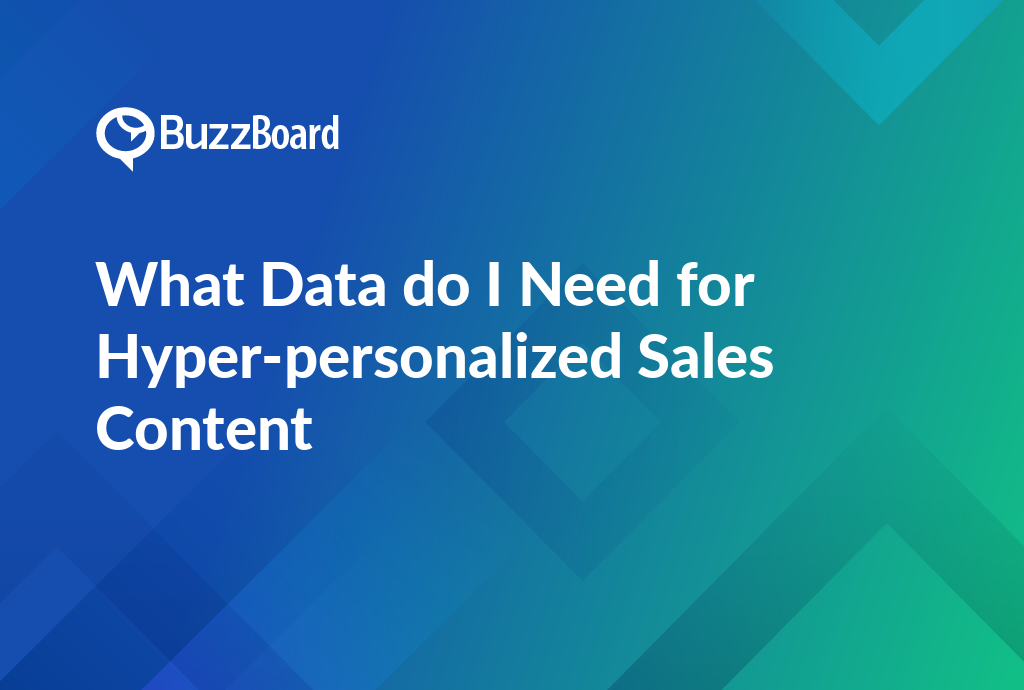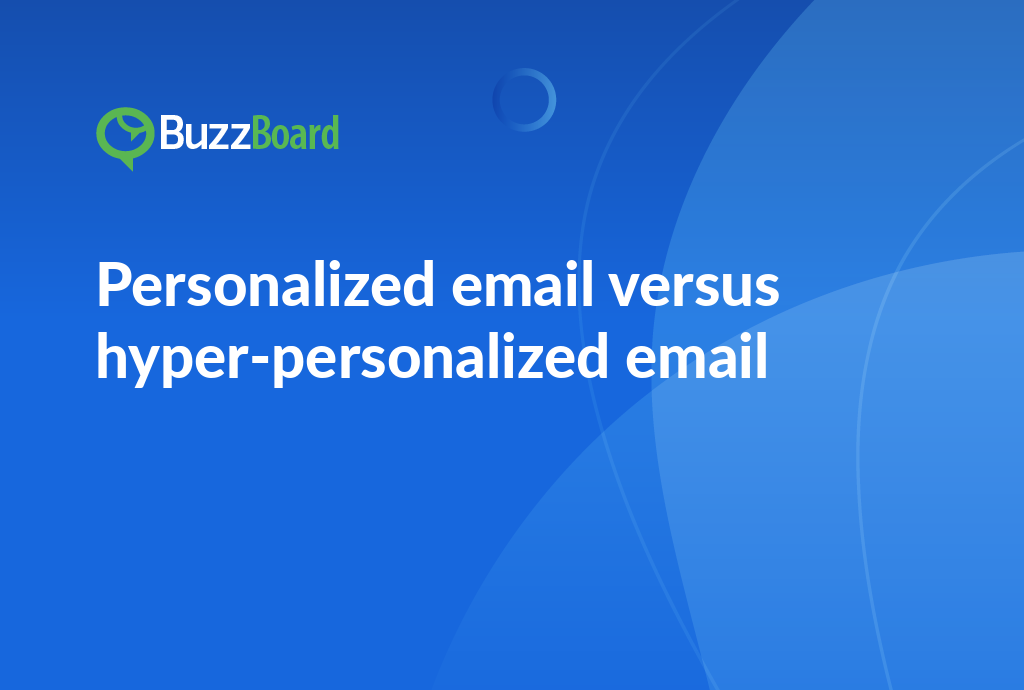What data do you need for hyper-personalized sales content? To create effective hyper-personalized sales content, you’ll need to gather and analyze a range of customer data, including demographics, behavior, preferences, and purchase history. This data can be collected from various sources, such as customer relationship management (CRM) systems, marketing automation platforms, and social media. Key data points to focus on include customer names, email addresses, job titles, company sizes, and purchase frequencies. Additionally, consider collecting data on customer interactions, such as website clicks, form submissions, and phone calls. By leveraging this data, you can create targeted, relevant, and engaging sales content that resonates with your customers and drives conversions.
Fueling Hyper-Personalized Sales Content: A Data-Driven Approach
In today’s digital marketing landscape, success hinges on creating a personal connection with every prospect. As a sales representative at a digital marketing agency, you’re equipped with a powerful tool: hyper-personalized sales content. But to craft content that truly resonates, you need a deep understanding of your target audience. This understanding is fueled by data.
Let’s delve into the specific data points that form the foundation of hyper-personalized sales content:
1. Building the Buyer Persona:
- Basic Demographics: Start with the essentials – name, age, location, and gender. This provides a starting point, but remember – hyper-personalization goes beyond the surface.
- Firmographics: For B2B sales, understanding the company size, industry, and revenue range helps tailor your message to their specific challenges.
- Psychographics: Uncover deeper insights like values, interests, and lifestyles. This can be gleaned from social media engagement, website browsing behavior, or even surveys.
2. Unveiling Customer Behavior:
- Purchase History: Analyze past purchases to understand their preferences and identify potential upsell or cross-sell opportunities.
- Website Interactions: Track website behavior to see which pages they visit and for how long. This reveals their pain points and content preferences.
- Engagement with Marketing Materials: Measure how they respond to emails, social media posts, or previous sales content. This indicates their preferred communication style and areas of interest.
3. Understanding the Customer Journey:
- Awareness Stage: Identify content that educates them about their challenges and positions your brand as a thought leader.
- Consideration Stage: Provide content that showcases how your product or service solves their specific problems and highlights success stories from similar companies.
- Decision Stage: Address their remaining concerns with case studies, demos, and free trials, demonstrating the value proposition.
4. Optimizing the Sales Funnel:
- Touchpoint Analysis: Analyze how leads interact with different channels (email, social media, website) throughout the sales funnel. This allows you to tailor content delivery for maximum impact.
- Performance Measurement: Track the effectiveness of your personalized content by monitoring metrics like open rates, click-through rates, and conversions. Use this data to continuously refine your approach.
By strategically leveraging this data, you can craft hyper-personalized sales content that speaks directly to each prospect’s needs and interests. Remember, data is the key to unlocking deeper customer understanding, fostering trust, and ultimately driving sales success.
Sales Enablement Tools and Hyper-personalization
In today’s fast-paced sales landscape, generic sales pitches are a thing of the past. To truly stand out and drive results, you need to craft presentations that speak directly to each prospect’s unique needs, challenges, and aspirations. This is where sales enablement tools come in – a powerful arsenal of data-driven insights and customer intelligence that empowers you to create hyper-personalized sales experiences.
Sales enablement tools, including CRM systems, marketing automation platforms, and AI-powered software, are designed to help you uncover the hidden patterns and trends that define each prospect’s journey. By leveraging these tools, you can gain a deeper understanding of your customers’ pain points, preferences, and behaviors, and use this information to tailor your message in a way that resonates deeply with each individual.
But hyper-personalization is more than just a clever marketing tactic – it’s a game-changer for sales teams. By demonstrating a laser-like focus on each prospect’s unique needs and challenges, you can create a sense of connection and relevance that sets you apart from the competition. This data-driven approach ensures that every interaction is meaningful, memorable, and impactful, leaving a lasting impression that drives conversions and builds loyalty.
So, how do you get started on the road to hyper-personalization? The key is to dive deep into your analytics and wield the power of sales enablement tools to streamline the process. By analyzing customer data, identifying patterns and trends, and using this information to inform your sales strategy, you can create a tailored approach that speaks to each prospect’s unique needs and aspirations.
The benefits of hyper-personalization are undeniable. By ditching one-size-fits-all content and crafting compelling, hyper-personalized sales narratives, you can transform your sales team into a well-oiled machine that drives deals forward with unprecedented efficiency. With every interaction, you’ll be able to demonstrate a deep understanding of each prospect’s needs, showcase the value of your product or service, and build a relationship that lasts long after the sale is made.
In short, hyper-personalization is the key to unlocking the full potential of your sales team. By leveraging sales enablement tools and data-driven insights, you can create a sales strategy that is tailored to each prospect’s unique needs and aspirations, driving conversions, building loyalty, and setting you apart from the competition.
How Hyper-Personalization Redefines Sales Process and Facilitates Sales Enablement in Digital Marketing?
Hyper-personalization has revolutionized the sales process in digital marketing agencies by enabling sales representatives to engage with prospective customers in a more intimate and personalized manner. This approach fundamentally restructures the sales process by integrating unique data, allowing for a customized approach that resonates with each individual customer. By leveraging hyper-personalization, sales representatives can create a tailored sales experience that addresses the specific needs, preferences, and pain points of each customer.
When implementing hyper-personalization, sales representatives often ask: what data do I need for hyper-personalized sales content? The answer lies in accumulating as much detailed information as possible about the customer’s behavior, preferences, and past interactions. This data can be gathered from a variety of sources, including:
- In-person interactions: Notes from meetings, phone calls, and in-person conversations can provide valuable insights into a customer’s needs and preferences.
- Digital footprints: Website analytics, social media engagement, and online search history can reveal a customer’s interests, concerns, and purchasing habits.
- Purchasing patterns: Historical data on a customer’s purchasing behavior, including frequency, quantity, and product preferences, can help sales representatives anticipate their needs and tailor their approach accordingly.
- Customer feedback: Feedback from customer surveys, reviews, and ratings can provide valuable insights into a customer’s satisfaction levels and areas for improvement.
By utilizing this gathered data in sales presentations and collateral, sales representatives can significantly enhance the sales process. The insights gained from hyper-personalization can be used to:
- Identify potential business opportunities: By analyzing a customer’s behavior and preferences, sales representatives can identify potential upsell and cross-sell opportunities.
- Cultivate customer relationships: Hyper-personalization enables sales representatives to build stronger relationships with customers by understanding their unique needs and preferences.
- Enhance the efficacy of the sales enablement process: By tailoring their approach to each customer, sales representatives can increase the effectiveness of their sales enablement strategy and improve overall sales performance.
For sales representatives at a digital marketing agency, maintaining a dynamic sales process that can quickly adapt to new customer insights is vital. This requires a willingness to continuously gather and analyze data, and to adjust their approach accordingly. By adopting hyper-personalization, sales representatives can substantially improve customer interaction quality and promote a tailored communication strategy that resonates with each individual customer.
Hyper-personalization not only boosts sales engagement but also facilitates sales representatives in nurturing a more significant relationship with existing potential customers. By providing individualized attention, sales representatives can engender greater customer loyalty, leading to increased sales potential for the digital marketing agency. In today’s competitive market, hyper-personalization is a key differentiator that can set a digital marketing agency apart from its competitors and drive long-term success.
By integrating hyper-personalization into your sales process, you can experience a transformation in your sales enablement strategy and achieve greater success in the digital marketing landscape.
Exploring the Intersection of Hyper-Personalization, Sales Presentations, and Sales Collateral
Sales representatives at digital marketing agencies must navigate the complex intersection of hyper-personalization, sales presentations, and sales collateral to effectively target small and local businesses. To achieve this, they must possess a deep understanding of the client’s journey and preferences, which can be achieved by collecting and analyzing data from various touchpoints throughout the sales process.
This data-centric approach is revolutionizing sales enablement by making sales presentations and sales collateral more effective, engaging, and relevant to the target audience. By incorporating personalization into sales presentations, sales representatives can capture the client’s attention, build trust, and forge a stronger bond with them. Similarly, personalized sales collateral can significantly boost conversion rates by addressing a targeted customer’s specific needs, concerns, and pain points.
However, hyper-personalization is more than just inserting the client’s name into the sales pitch. It requires a nuanced understanding of the client’s behavior, engagement level, and preferences to provide a distinct and personalized experience to each customer. This involves analyzing data from various sources, including:
- Website behavior: Analyzing how customers interact with your website, including pages visited, time spent on site, and search queries, can provide valuable insights into their interests and needs.
- Social media engagement: Monitoring social media engagement metrics, such as likes, shares, and comments, can help sales representatives understand a customer’s preferences and interests.
- Past purchases: Reviewing a customer’s past purchases can provide insights into their buying behavior, preferences, and loyalty.
- Customer feedback: Collecting and analyzing customer feedback can help sales representatives identify areas of improvement and tailor their sales approach to meet the customer’s specific needs.
- Market research: Conducting market research can provide valuable insights into industry trends, customer needs, and preferences, which can be used to inform sales strategies.
However, in the digital marketing agency realm, there is a delicate balance between personalization and privacy. Sales representatives must respect the customer’s privacy borders and ensure that personalization efforts do not infringe upon their privacy. This can be achieved by:
- Obtaining explicit consent: Ensuring that customers provide explicit consent before collecting and using their personal data.
- Providing transparency: Being transparent about how personal data is collected, used, and stored.
- Implementing data protection measures: Implementing robust data protection measures to prevent data breaches and ensure the secure storage of personal data.
In conclusion, mastering the crossroads of hyper-personalization, sales presentations, and sales collateral affords a competitive edge in the sales process. By leveraging data-driven insights and respecting the customer’s privacy, sales representatives can create personalized sales experiences that drive engagement, conversion, and loyalty.
The Crucial Role of Data in Producing Hyper-Personalized Sales Content for Modern Digital Marketing Agencies
In the realm of digital marketing, data has become an indispensable tool, playing a vital role in assisting sales representatives in their sales processes. One of the most effective ways to leverage data is by understanding the necessary information required for hyper-personalized sales content. This approach can significantly enhance interactions with clients, particularly with small and local businesses.
Hyper-personalization involves more than just identifying potential clients by name. It requires a comprehensive understanding of their needs, preferences, and behaviors, which can be achieved by analyzing a wide range of data points. This includes demographic details, such as age, location, and industry, as well as browsing and purchase history, social activity patterns, and other relevant data. By utilizing this data, sales representatives can deliver sales presentations that match the specific requirements and expectations of each client, resulting in a more tailored and effective sales approach.
Incorporating data-driven insights into your sales enablement strategies allows you to construct compelling sales collateral that aligns with your target audience and yields more meaningful engagements. This can be achieved by using data to identify patterns and trends in customer behavior, and then tailoring your sales message to resonate with each individual prospect. By doing so, you can increase the likelihood of garnering consideration and action from potential clients.
The benefits of hyper-personalization are numerous. For instance, a study revealed that 80% of customers are more likely to invest in a product or service from a brand that caters to personalized experiences. This statistic underscores the huge relevance of data in the sales process and highlights the importance of incorporating data-driven insights into your sales strategy.
So, what should be the next step? Boost your data interpretation and capitalize on your hyper-personalization strategies. This can be achieved by:
- Collecting and analyzing large amounts of data from various sources, including customer interactions, social media, and online behavior.
- Using data visualization tools to identify patterns and trends in customer behavior, and to gain a deeper understanding of their needs and preferences.
- Developing targeted marketing campaigns that are tailored to specific segments of your target audience.
- Continuously monitoring and adapting your sales strategy to ensure that it remains relevant and effective.
- Fostering a culture of data-driven decision making within your organization, and encouraging collaboration between sales, marketing, and customer service teams.
By following these steps, you can unlock the full potential of hyper-personalization and reap the rewards of a more effective and efficient sales process. Remember, the key to success lies in continuously adapting, personalizing, and growing your sales strategy to meet the evolving needs and preferences of your target audience.
Understand How Data-Driven Hyper-Personalization Can Revolutionize Your Sales Content and Marketing Strategies
As a sales representative at a digital marketing agency, understanding how to leverage data-driven hyper-personalization can be a game-changer for your sales content and marketing strategies. By harnessing the power of data, you can create a tailored approach that speaks directly to your target audience’s needs, preferences, and behaviors. This level of customization is the holy grail of sales, and it’s essential to understand what data is needed to achieve it.
To start, you need to gather a wealth of data on your target audience. This includes information on their behaviors, preferences, and trends. This data can come from various sources, such as customer relationship management (CRM) software, social media, website analytics, and customer feedback. By combining this data, you can create a comprehensive profile of your target audience, allowing you to tailor your sales process to their specific needs.
The key to successful hyper-personalization is to go beyond the usual “name” and “company” personalization. This approach is too generic and doesn’t provide the level of customization that today’s customers expect. Instead, you need to deliver truly tailored sales presentations and collateral that speak directly to your customer’s needs and pain points. This can be achieved by using data to understand their interests, goals, and challenges, and then using that information to create personalized content that resonates with them.
The benefits of hyper-personalization are numerous. For one, it can lead to increased engagement and conversion rates. When customers feel like you’re speaking directly to them, they’re more likely to pay attention and respond to your message. Additionally, hyper-personalization can help to build trust and credibility with your customers. When you take the time to understand their needs and tailor your approach accordingly, they’re more likely to perceive you as a trusted advisor rather than just another salesperson.
Hyper-personalization also has a significant impact on your sales team. By providing them with better-targeted materials and knowledge, you can equip them to be more effective and efficient in sealing deals. This can be achieved by using data to identify the most effective sales strategies and tactics, and then providing your team with the tools and training they need to execute them.
However, it’s essential to note that the quality of data plays a significant role in successful hyper-personalization. As a sales representative, you must gather accurate and insightful data and utilize it effectively. This means being meticulous in your data collection and analysis, and using data visualization tools to help you make sense of the data and identify patterns and trends.
In addition, you need to be transparent and honest with your customers about how you’re using their data. This is crucial for building trust and maintaining a positive relationship with your customers. You should also ensure that you’re complying with all relevant data protection regulations, such as GDPR and CCPA.
Hyper-personalization is a powerful sales strategy that can help you to stand out in a crowded market and drive real results. By leveraging data to understand your target audience’s needs and preferences, you can create a tailored approach that speaks directly to them. However, it’s essential to gather accurate and insightful data, and to use it effectively to drive results. With the right approach, hyper-personalization can be a game-changer for your sales content and marketing strategies.
Conclusion
Creating hyper-personalized sales content requires a deep understanding of your customers’ needs, preferences, and behaviors. By gathering and analyzing the right data, you can create targeted, relevant, and engaging content that resonates with your audience and drives conversions. From demographics and behavior to preferences and purchase history, there are numerous data points to consider when crafting your sales content. By leveraging these insights, you can create a personalized experience that sets your brand apart from the competition and drives long-term customer loyalty.
Remember, the key to successful hyper-personalization is to be data-driven and customer-centric. By focusing on the needs and preferences of your customers, you can create a sales content strategy that is tailored to their unique needs and drives real results. With the right data and a clear understanding of your customers, you can unlock the full potential of hyper-personalized sales content and take your sales efforts to the next level.









